Introduction
This article will describe how to connect a Quantum RTLS 2.0 deployment to the Pick and Place Template App on the Tulip Library to:
-
Dynamically create zones around bin and jig locations using the live position of a ZeroKey Mobile
-
Use a ZeroKey device to track hand positions in real time to digitize pick and place operation at a work station
-
Provide the operator with real time visual feedback when a part is correctly picked and placed
-
Only advance work instructions when steps are successfully completed
-
Generate an instant error message if an error is detected
-
Capture data on pick step times and accuracies
Easily extend this template application to your own use case by adding or removing work instruction pages and modifying the onscreen graphics. Integrate pick lights (if available) with the pre-defined event triggers to provide additional feedback to the station operator.
Requirements
-
An existing Quantum RTLS 2.0 deployment with ZeroKey SIP 2.3.0 or higher
- To verify your SIP version in the dashboard, click the ZeroKey Logo in the top left corner
-
Connection of your ZeroKey Edge Compute Device to a network with unrestricted internet access
-
A Professional or enterprise subscription to Tulip Interfaces
-
(Optional but recommended) The ability to connect your Tulip client devices to the same local network as the ZeroKey Edge Compute Device
Obtain your Edge Compute Device’s (ECD’s) Cloud URL
In the dashboard, navigate to the System tab and go to the Information section. Here, you’ll see values under ECD Edge URL, ECD Cloud URL, ECD Serial Number, and Hardware Identifier.
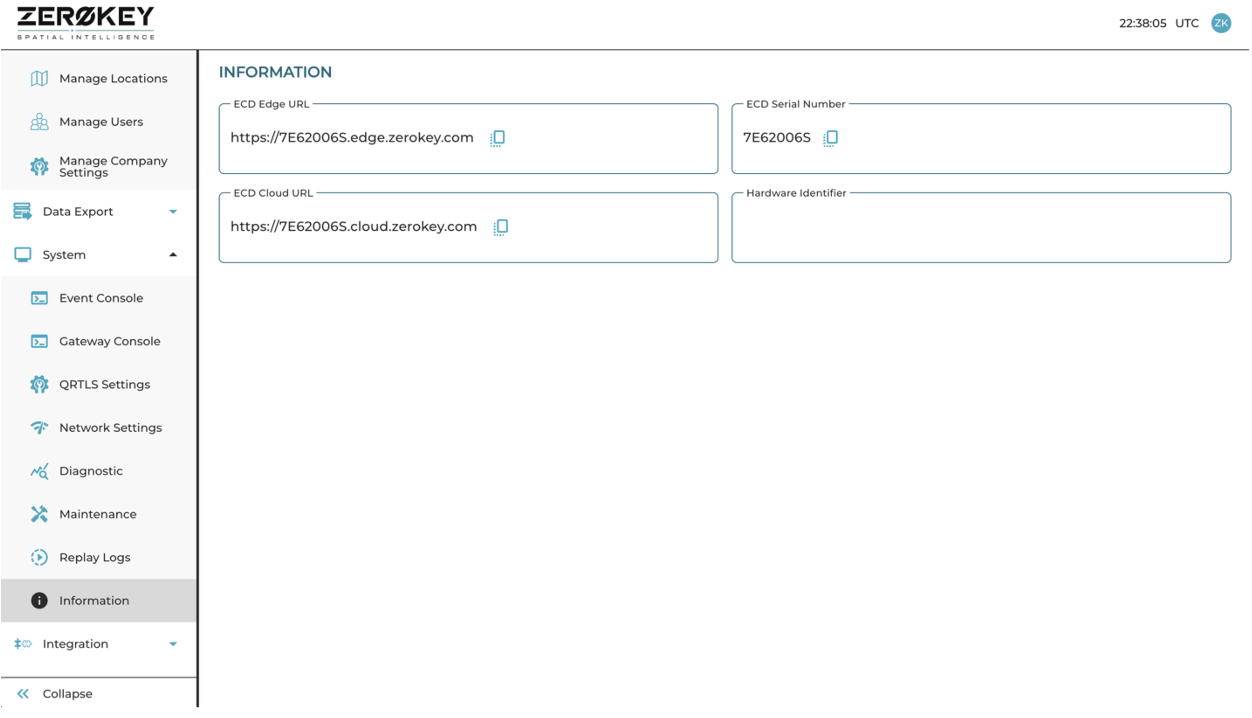
You will need the ECD Cloud URL for the ZeroKey Connector Suite. You will need either the ECD Cloud URL or the ECD Edge URL for the Base Layout ZeroKey Custom Widget. The Edge URL may only be used if both the ZeroKey System and the Tulip client device are on the same LAN but will minimize event latency between the systems.
Configure the Connector Environment Settings
This app requires the use of the ZeroKey Connector Suite. If not already configured, follow the instructions in the support article to configure the Connector Environment Settings and test the connection.
To learn more about the ZeroKey Connector configuration visit this page.
Configure the Base Layout Custom Widget
This app uses the ZeroKey Custom Widgets to trigger logic based on real time data coming out of your ZeroKey system and will require you to configure the connection settings in the SIP Data Source Widget on the Base Layout of the app.
Select the ZeroKey Icon on the Base Layout of the app and input your ECD Cloud or Edge URL and credentials into their respective fields.
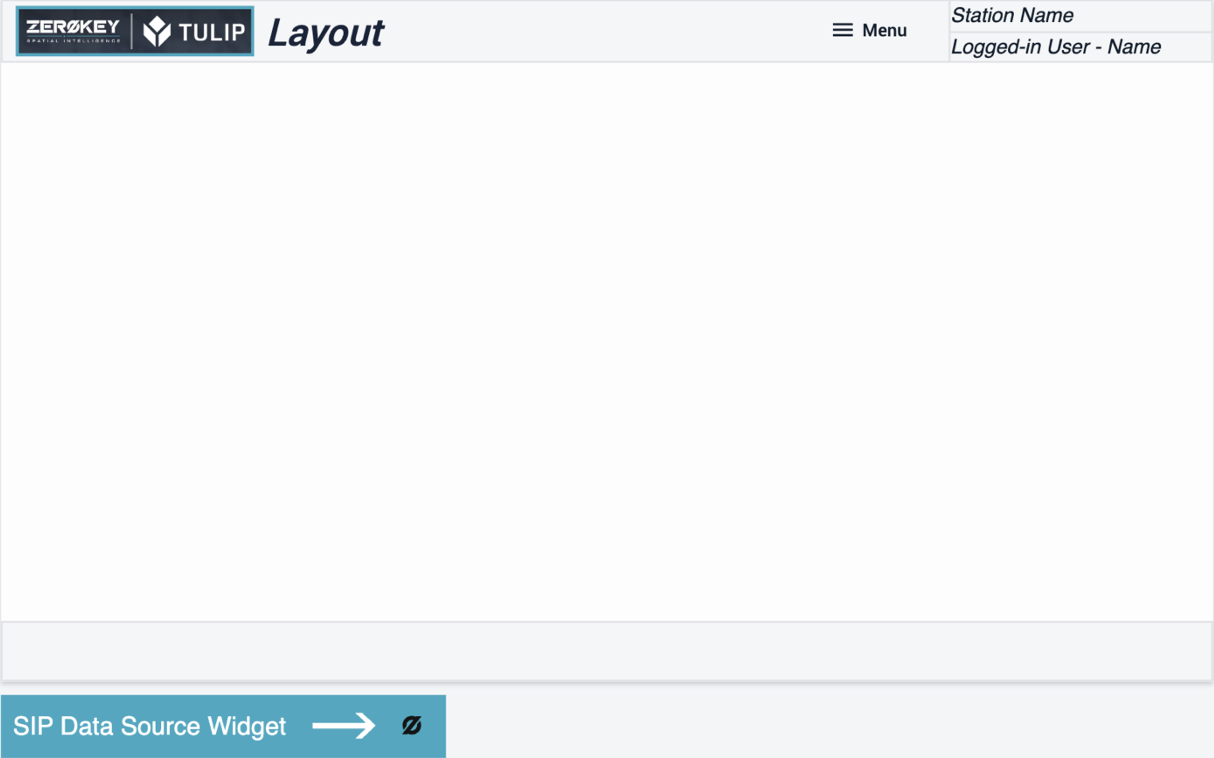
Create Bin and Jig Zones
When the app is first opened, the Admin step will display a list of all the ZeroKey Mobile devices connected to the system. Select the MAC address corresponding to a wristband tracker that will be used to identify the bin positions at the work station. Once selected, the real time coordinates will be displayed on screen. Specify a radius for the zones (in meters) or use the default value of 0.125 m.
Next, select Bin 1 from the Zone Name table. While wearing the selected wristband, place your hand in the physical bin you want to identify as Bin 1 at your station and click Create Zone. Do this for all the 6 bins. You will also need to identify the position of the Jig Zone (which could also be a parts tray or cart, depending on your application – wherever you want to identify a correct “place” location for the parts being picked).
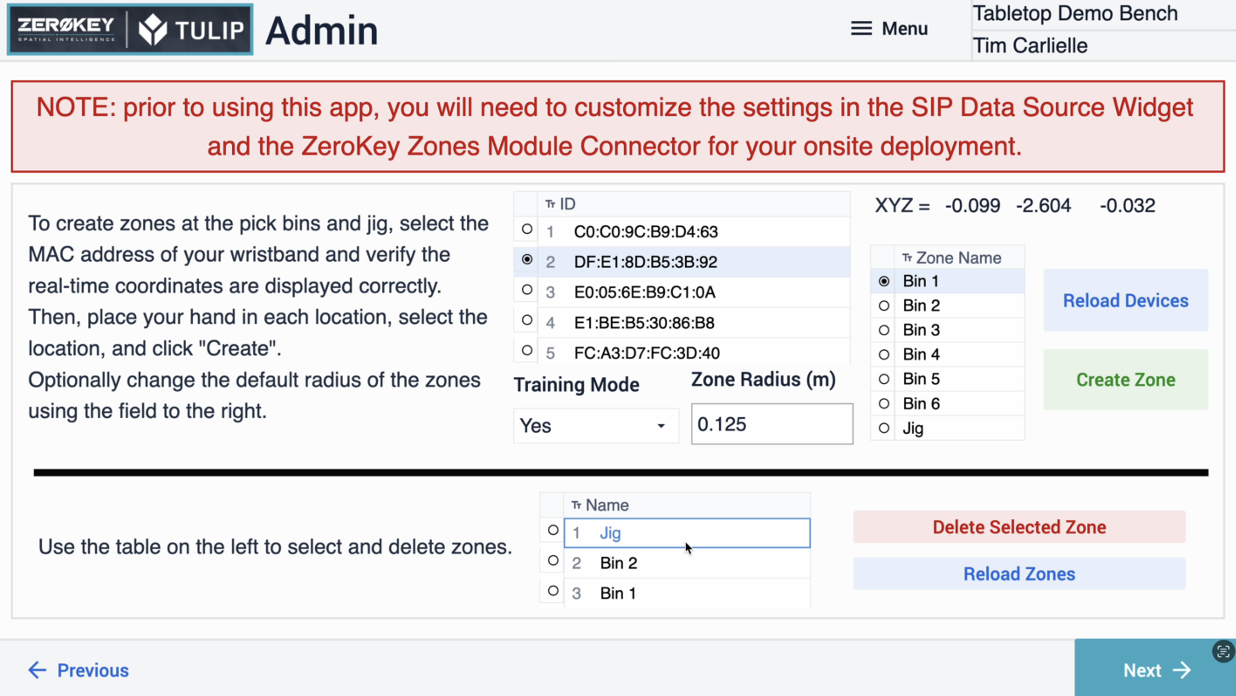
If necessary, you can select and delete zones using the table at the bottom of the step.
The app logic will only use Zones listed in the Zone Name table, so if there are Zones with other names that show up in this list, they can simply be ignored. It is possible to create multiple Zones with the same name, so ensure that if you create a new Zone, you also manually delete the old one with the same name. If you add Devices or Zones while the step is running, you can use the “Reload Devices” and “Reload Zones” buttons to refresh the tables, but as Zones are created or deleted from within this step the Zone list will automatically refresh afterwards.
Using the Work Instruction Steps
The work instruction steps use logic on the Zone Entry and Zone Exit triggers of the SIP Event Trigger Widget to check whether every zone collision corresponds to the operator grabbing a part from the correct or incorrect bin. If the operator reached into the correct bin for the step, the work instructions step box will turn green.
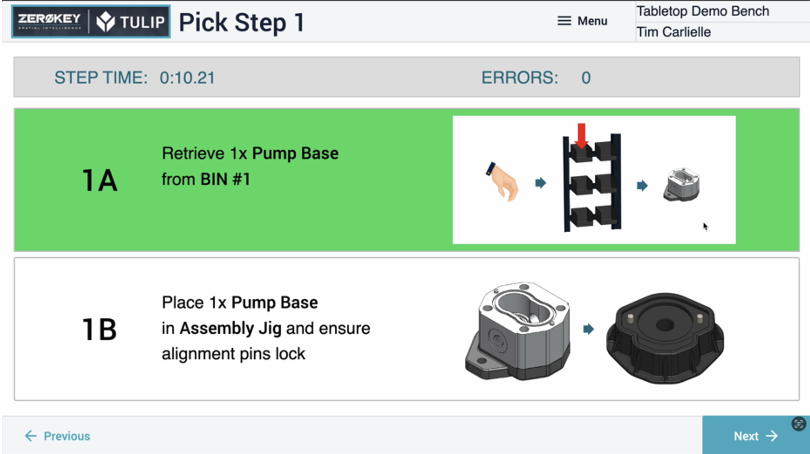
If an error is detected by reaching into an incorrect bin for the step, an error message will be displayed, and the error count will be incremented.
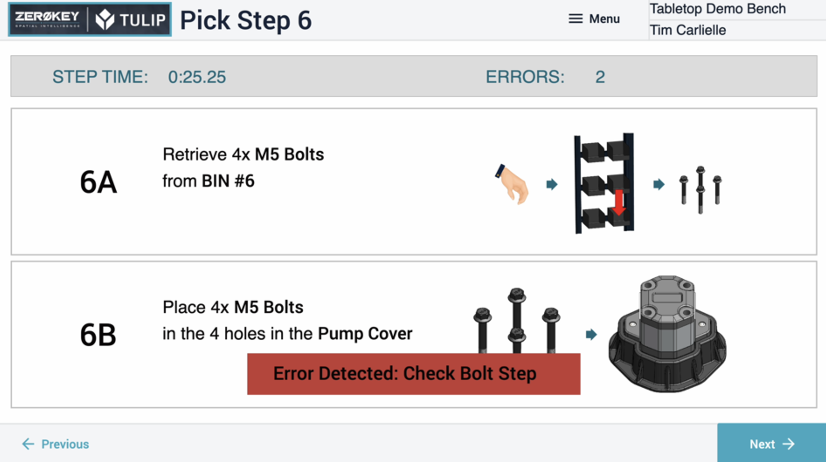
Finally, if the Jig zone is entered after a correct pick is detected, the pick box will turn green and the user will now be able to advance to the next step page.
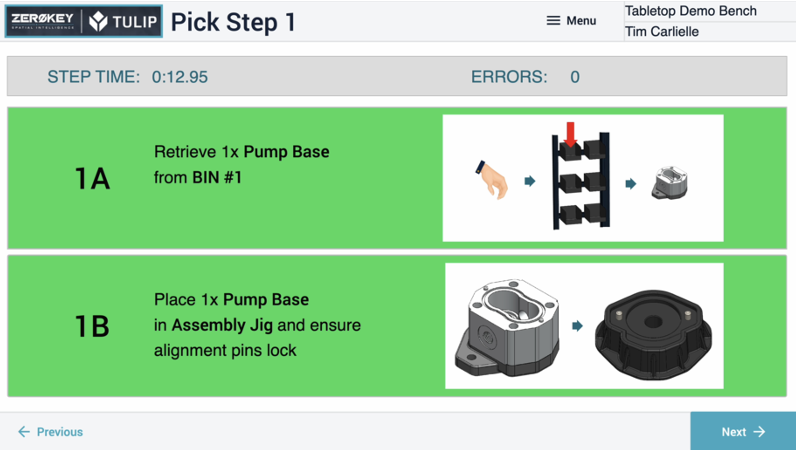
Disabling Training Mode to Automatically Advance Steps
By default, Training Mode is selected when the app is first loaded. This requires the user to manually advance the work instructions step after completing each step successfully. When disabled, taking your hand away from the Jig zone after successfully completing both the pick and place steps will automatically advance the app to the next step. This allows for a completely touchless experience where no onscreen interaction is required by the user.
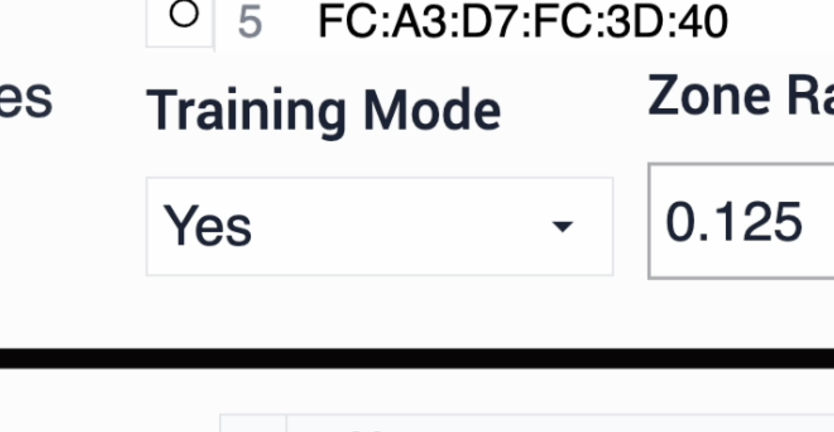
Workflow Complete Step
After completing all the steps, a final page will display the information that has been collected over the previous run including the step time and whether an error was detected and corrected during that step. This step reference local app variables that will be overwritten on subsequent cycles, but in a production environment is easily modified to write these outputs to a table for future recall.
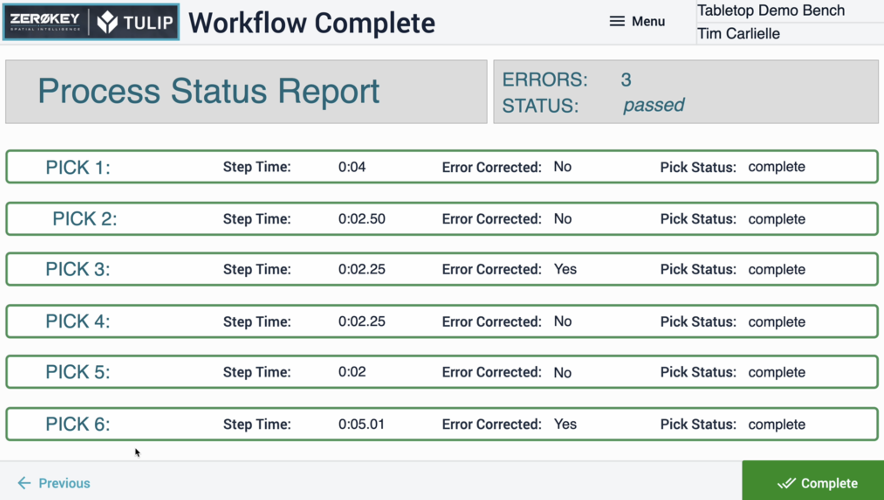
Further Reading
If you want to know more about our partnership with ZeroKey visit our partner page.
To learn more about ZeroKey solutions you can check out these resources: